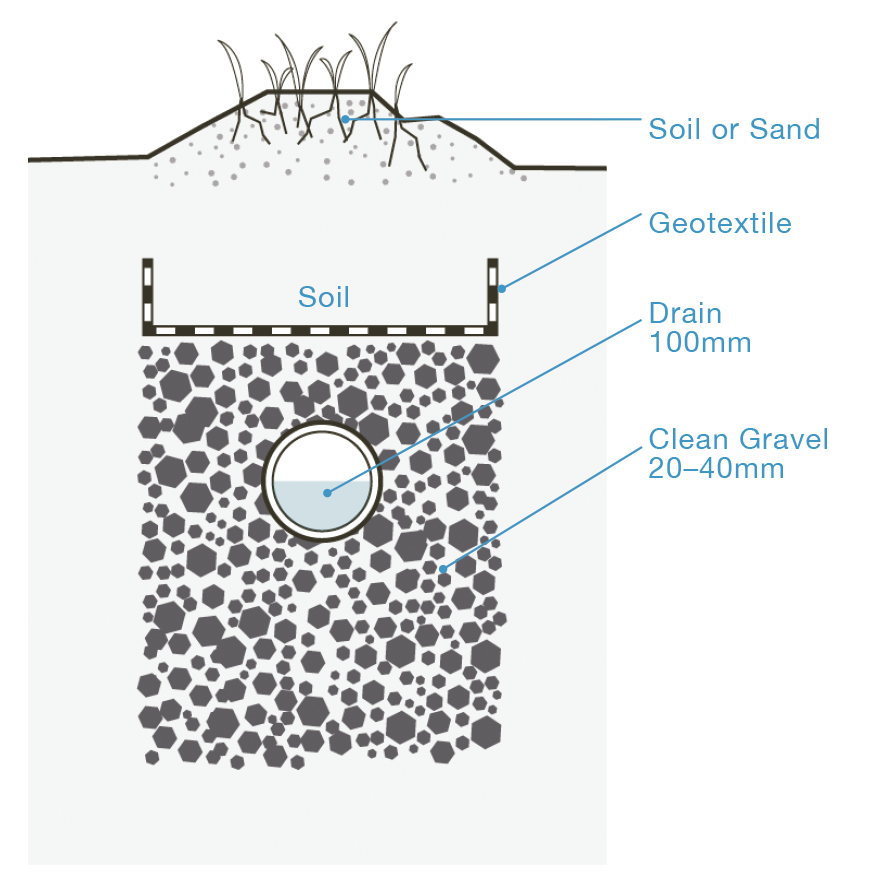8.5.1 Infiltration Trenches

Infiltration trenches, also known as leach fields, absorption fields, or disposal fields, are designed to evenly distribute treated effluent into the surrounding soil. However, this technology is not suitable for sandy and gravelly soils or non-porous soils such as clay or rocks. Instead, the receiving soil should be porous, such as silt, fine sand, or light clays. The soil must have the capacity to filter and be biologically active by hosting microorganisms.

A leach field consists of a network of underground pipes or chambers placed in trenches filled with gravel or other media. A layer of geotextile fabric is placed on the gravel layer to prevent small particles from clogging the pipe. A final layer of sand or soil covers the fabric and fills the trench to the ground level. A dosing or pressurised distribution system may be installed to ensure that the whole length of the infiltration trenches is used and that aerobic conditions are re-established between dosing. The pipes or chambers are perforated (3 cm holes every 20 cm are recommended) to allow the effluent to exit and infiltrate into the soil. As the effluent percolates through the soil within the leach field, various soil layers act as a natural filter, removing contaminants and pathogens from the wastewater. This process contributes to the final treatment of the effluent.
The following table summarises the recommended design criteria for infiltration trenches.
| Design Criteria | Recommendations |
|---|---|
| Depth of trench | 0.3 – 1.5 m |
| Width of trench | 0.3 – 1.0 m |
| Length of trench | <20 m |
| Distance between trenches | 1.0 – 2.0 m |
| Depth of drainpipe | >0.15 m beneath surface |
| Thickness of gravel layer under drainpipe | 0.15 cm |
| Distance to water source | >30 m |
| Level above the groundwater table | >1.5 m |
Combined with a well-functioning and well-maintained pre-treatment system, infiltration trenches can operate for over 20 years. Clogging may become an issue over time, requiring the cleaning of pipes. Installing the system far away from any potential potable water source is essential. Since it is an underground installation, users will rarely come into contact with the effluent, avoiding immediate health risks. There should also be no heavy traffic above it, as this could crush the pipes or compact the soil.
